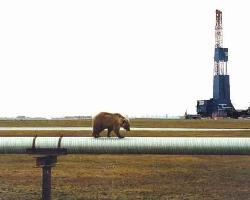
This is a placeholder text
Group text
by Mountain Lion on 17 February 2014 - 21:02

by beetree on 18 February 2014 - 15:02
Keystone XL Pipeline: 4 Animals and 3 Habitats in Its Path
...
Some people, seeing a map of the pipeline's proposed 875-mile route through the Great Plains, may picture the region in the terms of 19th-century explorers who called it the "great American desert": a barren land lacking in natural-history interest. In fact, though the vast herds of grazing animals that Lewis and Clark saw are greatly diminished, rich ecosystems endure. And while the pipeline route crosses some agricultural land, much of it would traverse natural habitats in Montana, South Dakota, and Nebraska where harmful effects on native animals and plants could—some say would, inevitably—occur. (See related, "Oil Flows on Keystone XL's Southern Leg, But Link to Canada Awaits Obama Administration.")
by Mindhunt on 24 February 2014 - 02:02
Contact information Disclaimer Privacy Statement Copyright Information Terms of Service Cookie policy ↑ Back to top




